Half a century ago, the country emerged from war with a poor, self-sufficient agriculture. Flowers - in the minds of Vietnamese people - at that time were simply peach blossoms, kumquat branches, and yellow chrysanthemums for Tet, planted in small quantities to "create atmosphere".
Flowers at that time were simply a spiritual symbol, almost no one thought of flower production as a business that could make them rich. Even less did anyone think of flowers as an export product.
Half a century after the war and the story of the Vietnamese flower industry reaching out to space (Video: Khanh Vi).
But today, that story is different.
From several thousand hectares of fragmented land with traditional flower varieties, Vietnam has formed tens of thousands of hectares of specialized flower growing areas, with some places earning 5-7 times more than rice growing.
Vietnamese farmers master the closed process from the laboratory to the finished product production of many imported "aristocratic" flower varieties. In many flower growing areas, it has become common for farmers to change their lives, own houses and cars.
Science is the driving force behind that transformation.
A conversation with Associate Professor Dr. Dang Van Dong - Deputy Director of the Institute of Vegetable and Fruit Research - is a true slice of an industry that was once neglected in the era of " rice mixed with bo bo seeds", but is now becoming one of the spearheads of Vietnamese agriculture.
What was the picture of Vietnam's flower industry like before, sir?
- Vietnamese people love flowers. This was evident even in the most difficult times - during the war, when meals were mixed with cassava and sweet potatoes - but every Tet holiday, people still kept the tradition of buying a peach blossom branch, apricot blossom branch, or a vase of chrysanthemums to display in their homes.
On the ancestral altar, on the spring offering tray, in the markets and in the countryside… there are flowers everywhere. Flowers are not just decorations, but the soul of Vietnamese culture.
However, if we talk about the flower industry - in terms of agricultural production and economy - then in the past we were really poor. Poor in breeds, poor in techniques, poor in production thinking.
Around 1995, the flower growing area of the whole country was only about 4,500 hectares - including all kinds of flowers, and mainly a few traditional varieties such as peach, kumquat, dahlia, chrysanthemum, marigold, apricot... Production was still fragmented, lacking planning, and had not yet formed a value chain from varieties - growing area - technique - consumption.
In particular, post-harvest stages such as preservation and packaging are almost neglected because the products are only sold around the village, there is no need to bring them far away, let alone think about exporting.
Therefore, although Vietnamese people love flowers, the Vietnamese flower industry is very weak.
With such a humble starting point, when we - the researchers - started to venture into the flower industry, almost everything was from "0".
But that is why every step we take - from surveying, selecting breeds, transferring techniques, building models to connecting businesses - is based on a clear, methodical foundation.
And it is this persistence that, after many years, has contributed to a significant transformation for the Vietnamese flower industry. From being "poor" in every aspect, it is now gradually asserting its position as an economic sector with high value and great potential.
From such a poor starting point, how has the Vietnamese flower industry transformed?
- Change starts with two key words: science.
From almost nothing - no breed, no technique, no process - we started small, but did it, did it thoroughly.
Personally, I came to this industry by chance. After completing my military service, I returned to my hometown and saw a countryside with too many hardships: the land was poor, the people were idle but still hungry. I decided to take the entrance exam to the Vietnam Agricultural Academy with only one dream: to study to help my hometown.
At that time, almost no one was working in the flower industry. There were no textbooks, no specialized instructors. I chose to study flowers because I thought that: Vietnamese people have a tradition of loving flowers, loving beauty, when the country's economy develops more, the demand for flowers will also increase.
In the early 2000s, the Vegetable and Fruit Research Institute began to approach new technologies such as hybridization, mutation, tissue culture, and then applied biotechnology to improve flower varieties.
Along with that is the construction of specialized growing areas, changing people's awareness from growing flowers for Tet to producing flowers for sale. We went to flower villages such as Nhat Tan, Ngoc Ha, Tay Tuu... to Da Lat, to the West to survey, learn and then transfer new techniques: from greenhouses, drip irrigation, to care and post-harvest handling processes.
A big step forward was when we successfully brought temperate flowers to the North. Previously, no one thought that high-quality lilies, tulips, or gerberas could be grown here. But we learned technology from the Netherlands and France, then brought it back and improved it to suit Vietnamese conditions. Up to now, lilies produced in the North are not inferior to imported flowers, and have even reached international markets such as Japan and Korea.
The flower industry has also begun to apply digital transformation: from seed management, plant growth monitoring, to pest and nutrition monitoring software. Technologies that were thought to only exist in developed countries are now present in every flower farm in Van Giang (Hung Yen), Me Linh (Hanoi), Sa Dec (Dong Thap), Da Lat...
Simply put: in the past, we grew flowers based on experience; now, farmers control the cultivation process with phones, AI, IoT, and they can make a profit of billions of dong on just a few acres of land. That is a very fundamental change - from thinking to production tools.
How is the flower industry currently bringing economic efficiency to growers, sir?
- It can be affirmed that, in the fields of agriculture, flowers are one of the products with the highest economic value on the same unit area. With just a few acres of land, if invested properly and applying good techniques, farmers can completely change their lives - and in fact, we have witnessed many stories like that.
For example, in Xuan Quan (Van Giang, Hung Yen) - an area that used to specialize in growing vegetables and corn - in just 10-15 years, it has transformed into a millionaire flower village. A household grows 1,000m² of Phalaenopsis orchids, each year can harvest about 30,000 plants, with an average selling price of 100,000-120,000 VND/plant, revenue reaching 3-3.5 billion VND, profit of about 1 billion VND/crop. There are households growing 2-3 sao, earning a net profit of more than 2 billion VND/year.
In Binh Khe (Dong Trieu, Quang Ninh), people growing Yen Tu apricot - a rare native apricot variety that the institute helped research and breed - are also earning hundreds of millions to billions of VND per crop. Many households own apricot trees worth tens to hundreds of millions of VND per tree, some even becoming "apricot tycoons" with apricot gardens worth up to 20-30 billion VND.
In Quang Chinh (Quang Xuong, Thanh Hoa), after converting from poor rice land to growing ornamental peach trees, thanks to the application of the technical process we transferred, the economic efficiency has increased 5-6 times compared to rice. A 2-year-old peach tree can be sold for 2-3 million VND during Tet, while only occupying an area of 4-5m².
In areas such as Tay Tuu, Me Linh (Hanoi) or Sa Dec, many households have been attached to flowers from generation to generation. They not only produce for sale, but also combine agricultural tourism, open homestays, rent check-in spaces, organize events... increasing efficiency 2-3 times higher than pure flower growing.
In the Red River Delta, we support a circular agricultural production model of lotus and gladiolus associated with tourism in Hung Ha (Thai Binh).
In the summer, the low-lying fields grow lotus, harvest lotus flowers, lotus seeds, lotus shoots, lotus leaves... In the fall, the water is pumped/drained, the lotus land is switched to growing gladiolus, and the flowers are harvested on the occasion of Lunar New Year. Both seasons are for tourism, both have beautiful flowers for visitors to experience. Each hectare can generate an income of 600 million VND and even up to 1.1 billion VND/year, while the investment cost does not increase much.
In Hoa Lu (Ninh Binh) - especially in the area near Trang An, Tam Coc - Bich Dong, the lotus growing model combined with tourism is bringing clear economic efficiency to the people.
Every lotus season from May to July, lotus ponds stretch at the foot of limestone mountains, creating a rare, poetic scene. Local people take advantage of this to develop services such as boating to see lotus flowers, take photos, enjoy lotus tea, and sell lotus products such as shoots, seeds, lotus-infused tea, etc. Many households also design wooden huts, bamboo bridges, and decorate miniature landscapes to serve tourists to take photos and relax.
According to preliminary statistics, each lotus crop can bring in revenue from 500 million to 1 billion VND/ha, of which about 40-50% comes from accompanying tourism services. This is a vivid proof that: a traditional crop, if invested in the right direction, can "blossom" both literally and figuratively.
From poor villages with only level 4 houses, now there are households that own villas, cars, send their children to university - even study abroad - starting from flower fields. That is no longer a dream.
The flower industry, therefore, is not just about beauty. It has become a stable livelihood, a great source of wealth and a genuine desire to get rich for tens of thousands of Vietnamese farmers.
With such strong development, does Vietnam have the potential to become a big name on the flower export map in the region and the world, competing with Thailand or even the Netherlands?
- It's not just about potential. I believe that Vietnam can absolutely become the leading flower export center in Southeast Asia if we can solve some important bottlenecks.
A clear example of export potential is Phalaenopsis orchids - a flower that was once considered an "imported specialty" during Tet. According to the Taiwan Orchid Association (China), before 2020, Vietnam ranked third in the world in Phalaenopsis orchid imports, behind only the US and Japan.
Less than 10 years ago, most of the Phalaenopsis orchids consumed in Vietnam had to be imported, which was expensive, had high transportation costs, not to mention the risk of time. But now, our institute and a number of domestic enterprises have mastered the technologies from breeding, propagation, to intensive cultivation, care, flowering treatment, packaging, and transportation.
What we are proud of is the quality of Phalaenopsis orchid branches/trees produced in Vietnam, which are more beautiful and durable than imported Phalaenopsis orchids. Currently, we and some gardeners are promoting the procedures to export Phalaenopsis orchids to the US market.
In 2022, an important milestone was set: for the first time, cut lilies produced by a Vietnamese enterprise in cooperation with the institute were exported to Japan on a trial basis with 5,000 branches. The Japanese side highly appreciated: Vietnamese lilies have the same quality as Dutch products, good preservation time, and more competitive prices.
Da Lat, the flower capital of Vietnam, is also asserting its position in the region. With more than 3,000 hectares of high-tech flower cultivation, applying strict processes according to European standards, this place has successfully exported cut flowers and flower varieties to Japan, Korea, Singapore...
Besides, flower growing regions such as Sa Dec, Van Giang, Hanoi, Quang Ninh have also begun to penetrate neighboring markets such as Cambodia, China, Thailand, opening up many new prospects.
What are the key bottlenecks you mentioned for Vietnam to become the regional flower export hub?
- If we only look at the growth figures - from 4,500 hectares in 1995 to about 50,000 hectares today, or the revenue increased 40 times in less than 30 years - then that is a remarkable step forward. But production alone is not enough. For Vietnamese flowers to truly have an international brand, many factors need to be synchronized:
- Professional planting area planning, with transparent traceability.
- International standard flower seeds: disease-free, copyrighted, stable quality.
- Closed chain: from production - preliminary processing - quarantine - logistics - preservation - to market.
- Leading enterprises play a leading role, because small-scale farmers cannot export on their own.
- And equally important: The State's involvement, through support policy mechanisms, trade promotion, and market opening negotiations.
If we can do that, I believe that not only will we surpass Thailand, but Vietnam can also become a major flower production and export center in Asia in the next decade.
The event of 169 Vietnamese lotus seeds being sent into space on a flight with Vietnamese-American astronaut Amanda Nguyen has attracted great public attention. As the person directly in charge of the selection process, can you share the scientific significance of this special journey?
- This is not a showy activity or simply to attract media attention. Sending Vietnamese lotus seeds into space is a research project with a clear scientific orientation, a long-term strategy and profound practical application value.
Lotus - as you know - is a plant that is closely associated with the spiritual and cultural life of Vietnamese people, and has high economic value and versatility: from culinary, medicinal to landscape.
But above all, the lotus is one of the few plants with an extremely special ability to "biologically sleep". That is, lotus seeds can survive for dozens, even hundreds of years and still retain the ability to germinate.
Thanks to this characteristic, lotus becomes an ideal candidate for experiments in extreme environmental conditions such as space - where there is microgravity, high radiation and constant temperature changes.
When we receive lotus seeds from space back to Earth, we will observe the germination, growth, and genetic variation (if any), thereby assessing the impact of the space environment on biological materials.
Who knows, from this change, we might select a new lotus variety with superior vitality - germinating faster, more disease resistant, longer lasting flowers or with a more special fragrance.
This is not only a study for lotus plants, but also one of the promising research directions for the future. From muddy fields, native lotus varieties can reach into space, carrying the aspirations of the Vietnamese people in their journey to conquer knowledge and expand the agricultural horizon.
Thank you Associate Professor, Dr. Dang Van Dong for the conversation!
Content: Minh Nhat
Photo: Minh Nhat
Video: Khanh Vi
Design: Khuong Hien
04/29/2025 - 00:01
Source: https://dantri.com.vn/khoa-hoc/nua-the-ky-sau-chien-tranh-va-cau-chuyen-nganh-hoa-viet-cham-toi-khong-gian-20250427214508240.htm


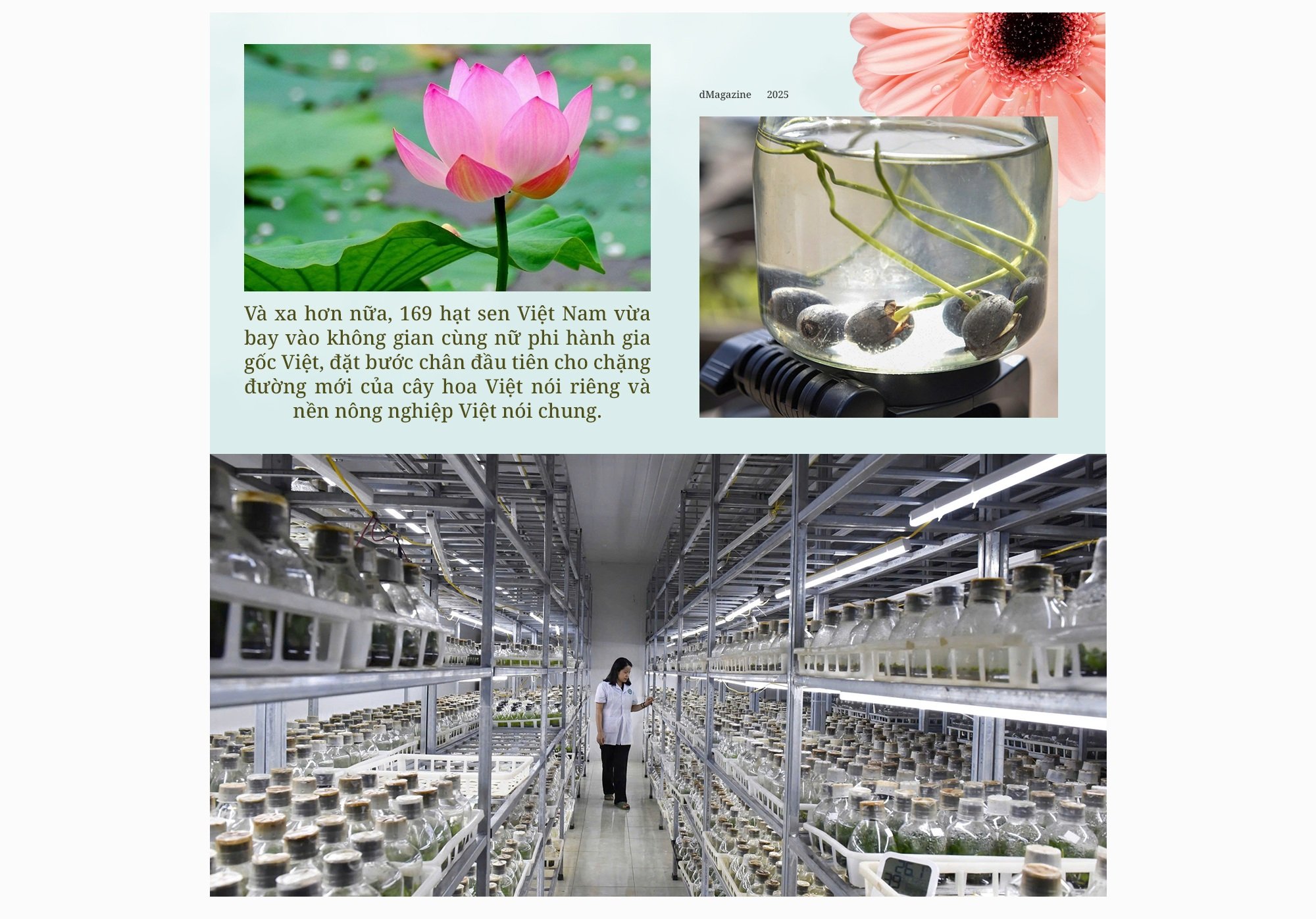

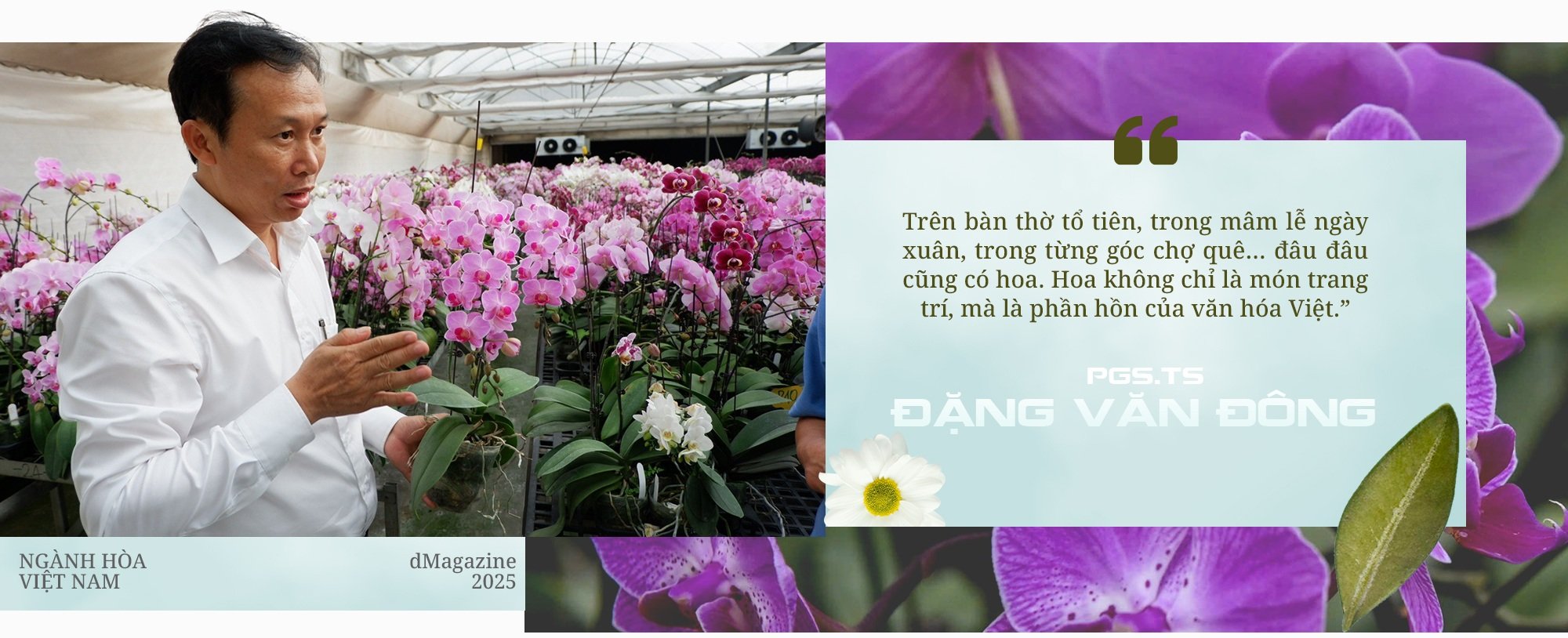
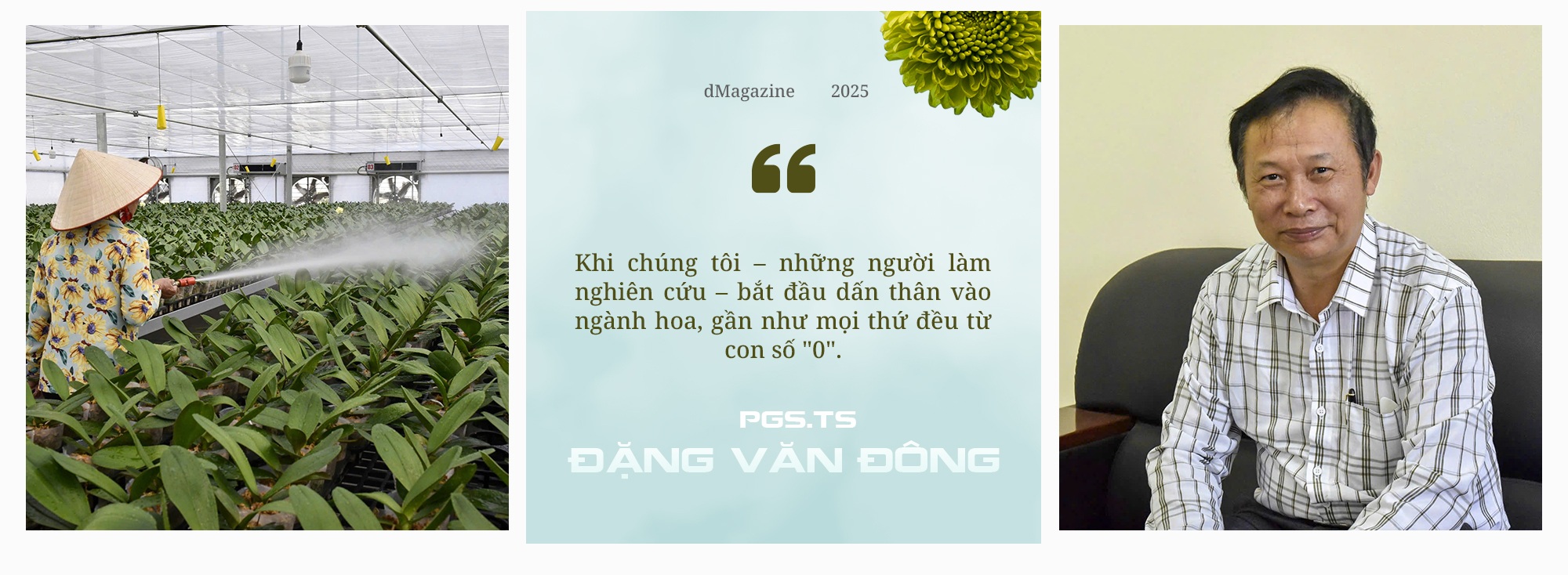
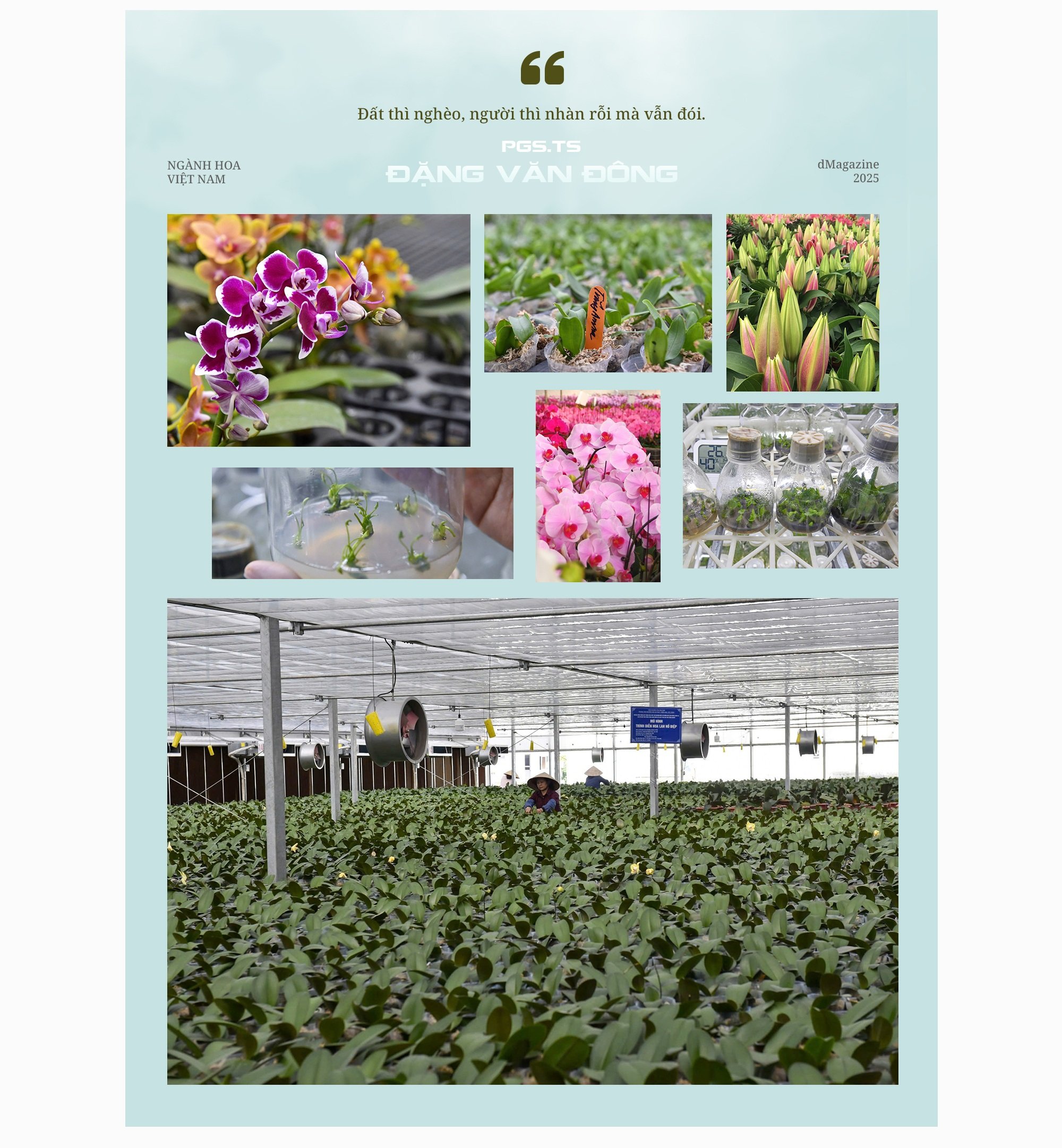
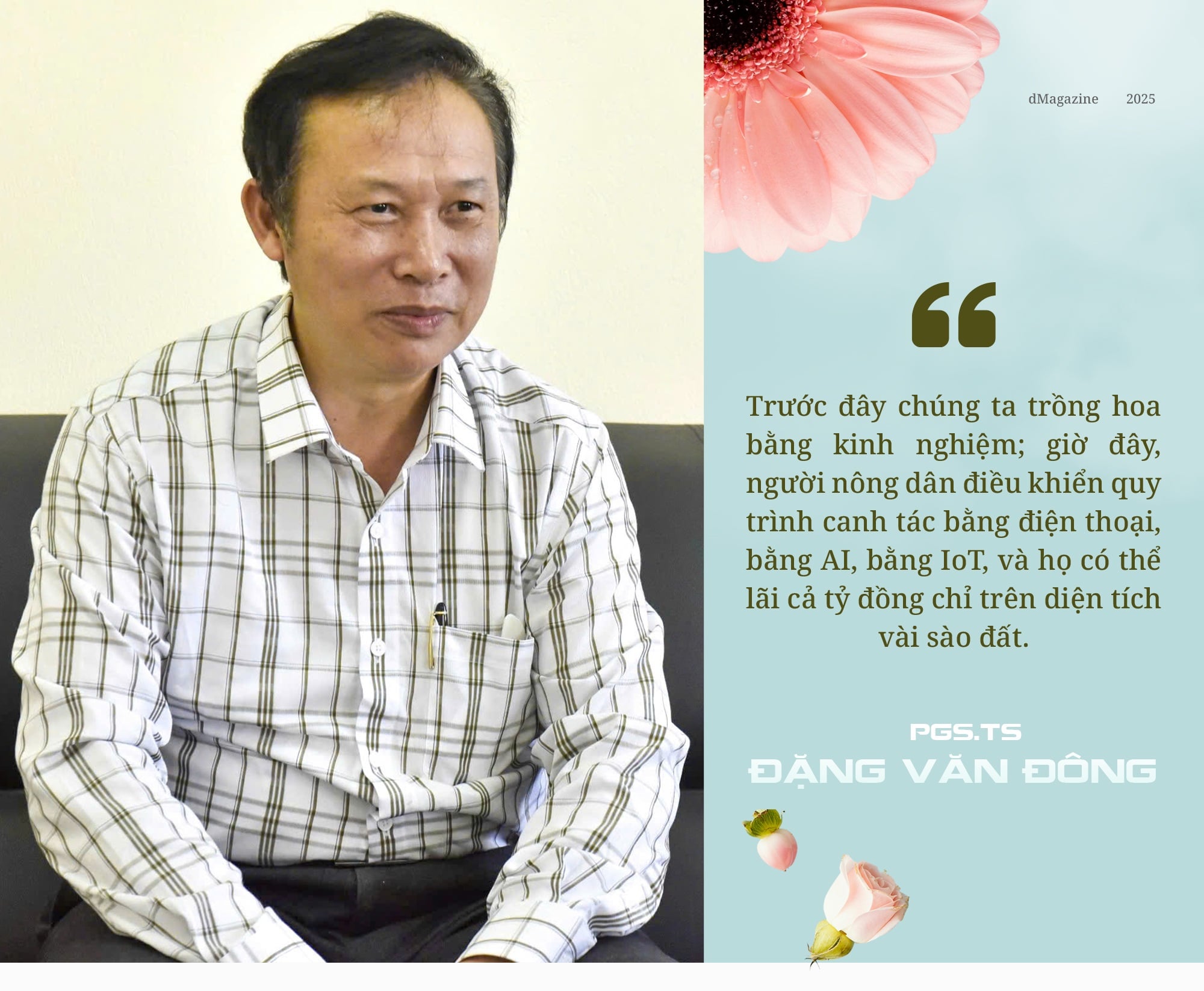




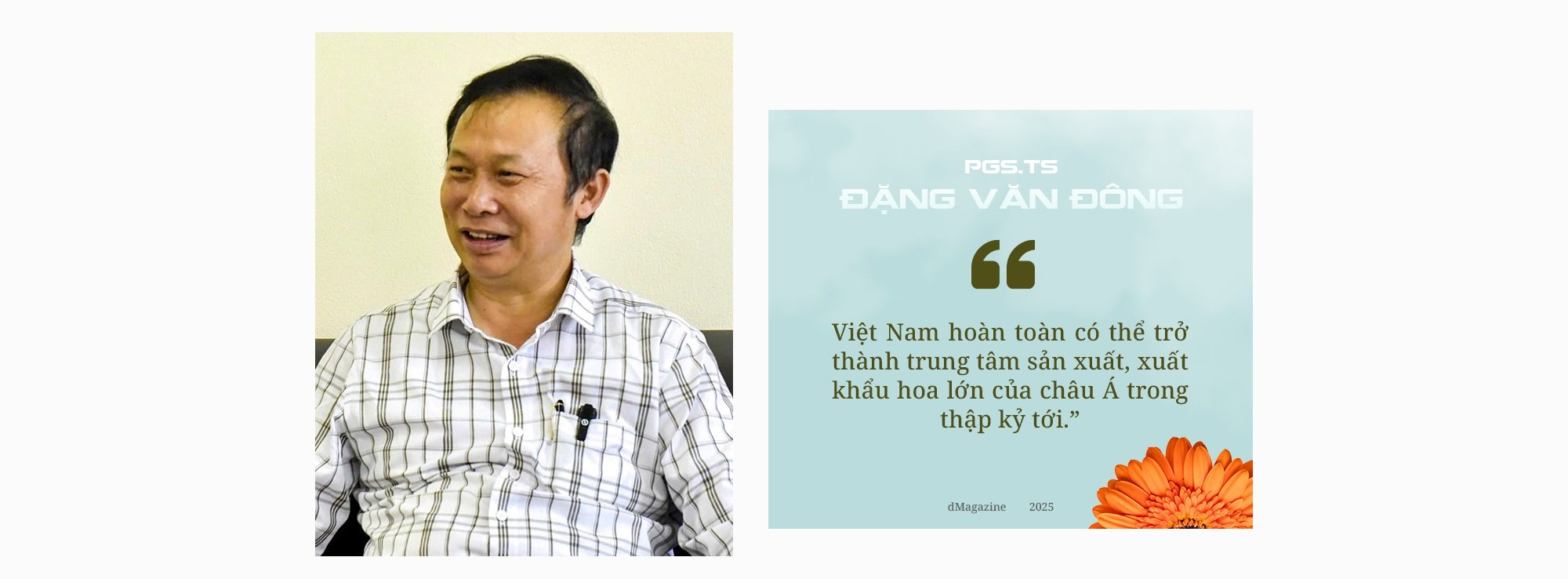

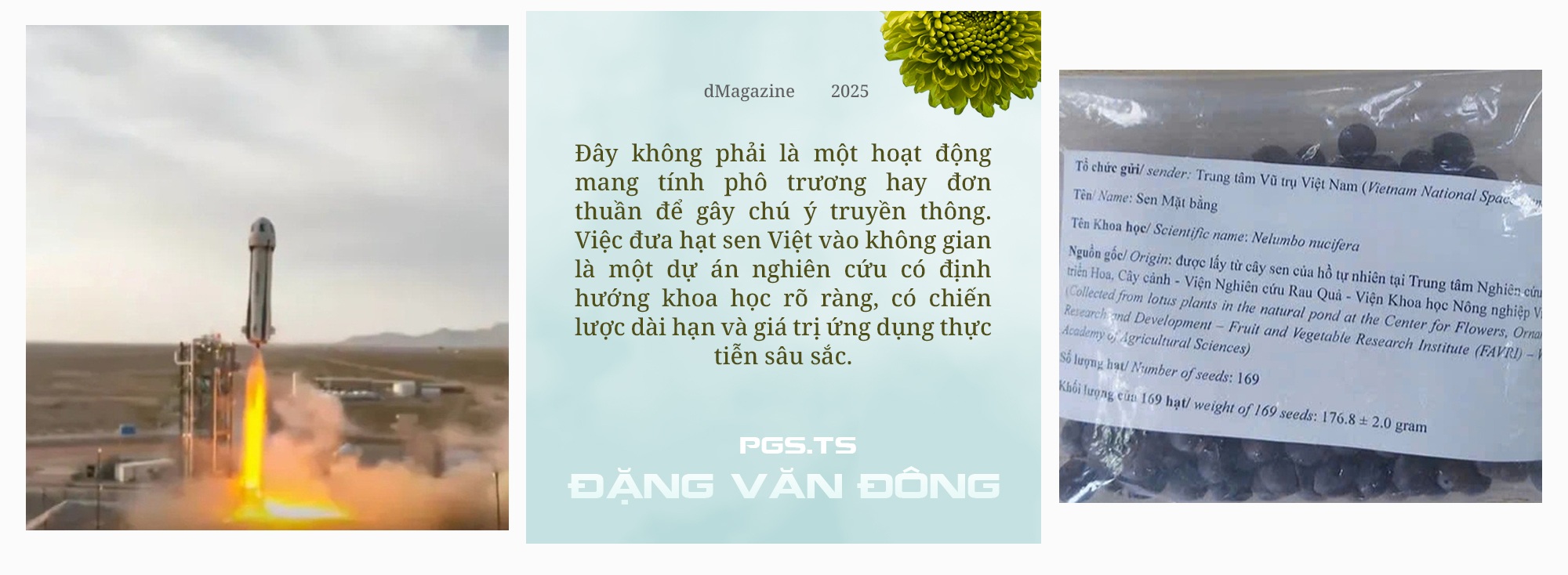

![[Photo] Ho Chi Minh City: People are willing to stay up all night to watch the parade](https://vphoto.vietnam.vn/thumb/1200x675/vietnam/resource/IMAGE/2025/4/29/cf71fdfd4d814022ac35377a7f34dfd1)
![[Photo] Nghe An: Bustling atmosphere celebrating the 50th anniversary of Southern Liberation and National Reunification Day](https://vphoto.vietnam.vn/thumb/1200x675/vietnam/resource/IMAGE/2025/4/29/64f2981da7bb4b0eb1940aa64034e6a7)
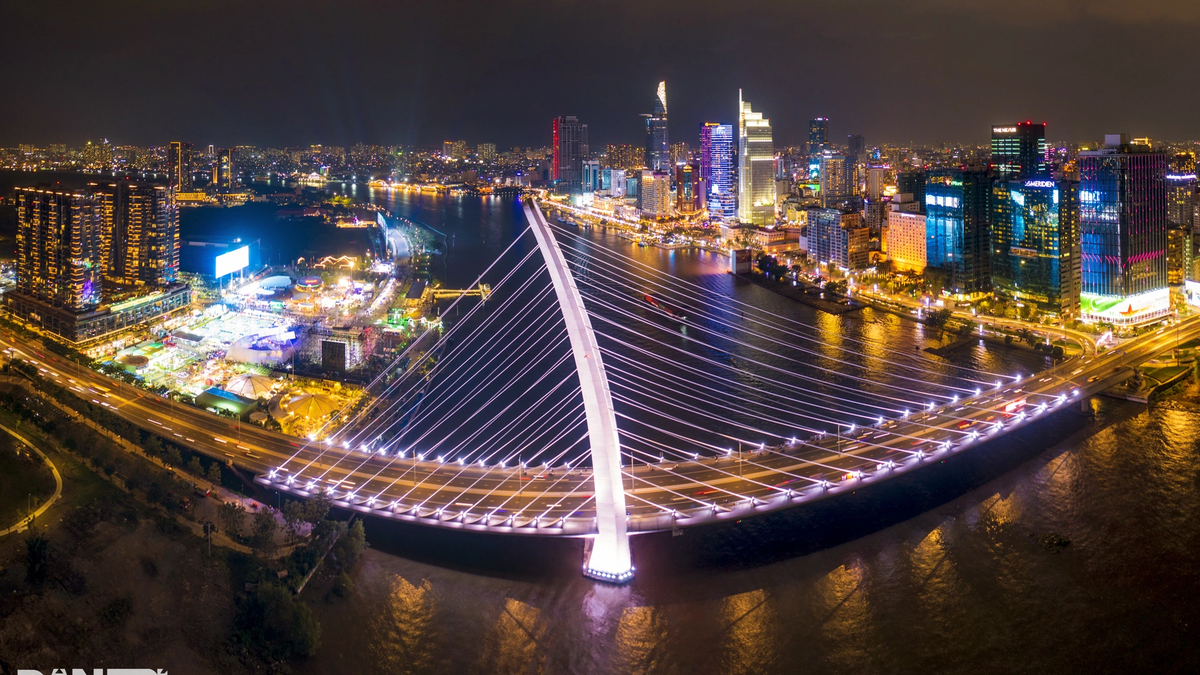
![[Photo] Prime Minister Pham Minh Chinh meets to prepare for negotiations with the United States](https://vphoto.vietnam.vn/thumb/1200x675/vietnam/resource/IMAGE/2025/4/29/76e3106b9a114f37a2905bc41df55f48)
![[Photo] Hanoi is brightly decorated to celebrate the 50th anniversary of National Reunification Day](https://vphoto.vietnam.vn/thumb/1200x675/vietnam/resource/IMAGE/2025/4/29/ad75eff9e4e14ac2af4e6636843a6b53)
![[Photo] General Secretary attends special art program "Spring of Unification"](https://vphoto.vietnam.vn/thumb/1200x675/vietnam/resource/IMAGE/2025/4/29/e90c8902ae5c4958b79e26b20700a980)
![[UPDATE] HCMC center before the April 30 parade: 'Only 9 hours left, will sleep sitting on the sidewalk'](https://vphoto.vietnam.vn/thumb/402x226/vietnam/resource/IMAGE/2025/4/29/0ff4e37fa63944889296bf9b9343939d)





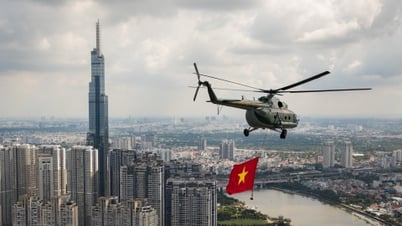

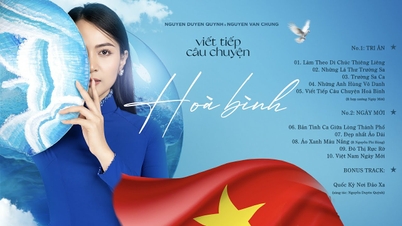


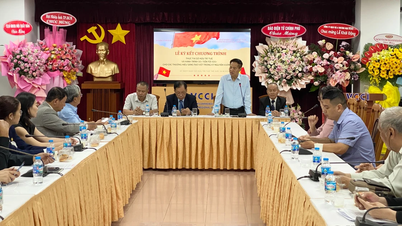

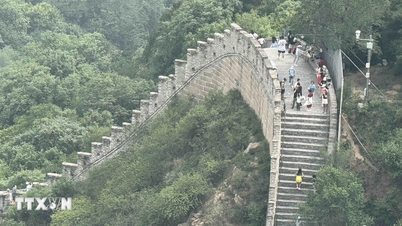






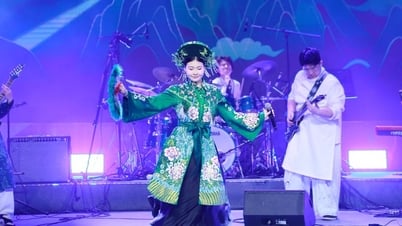



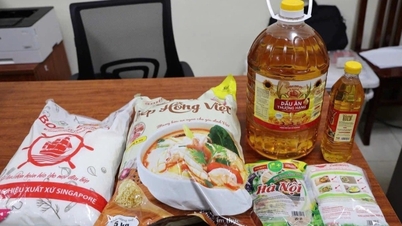

![[Photo] People choose places to watch the parade from noon on April 29](https://vphoto.vietnam.vn/thumb/1200x675/vietnam/resource/IMAGE/2025/4/29/3f7525d7a7154d839ff9154db2ecbb1b)













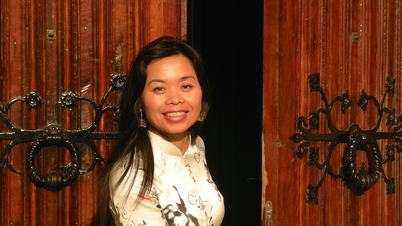
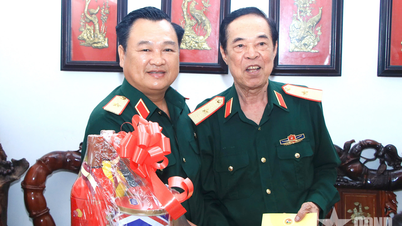















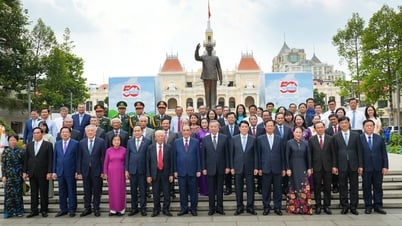











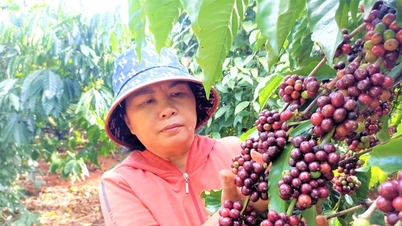






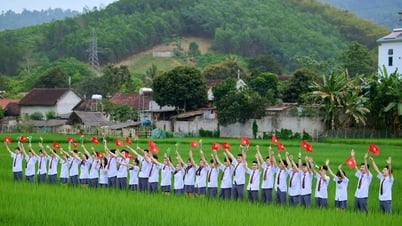
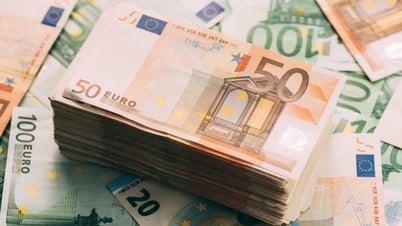











Comment (0)